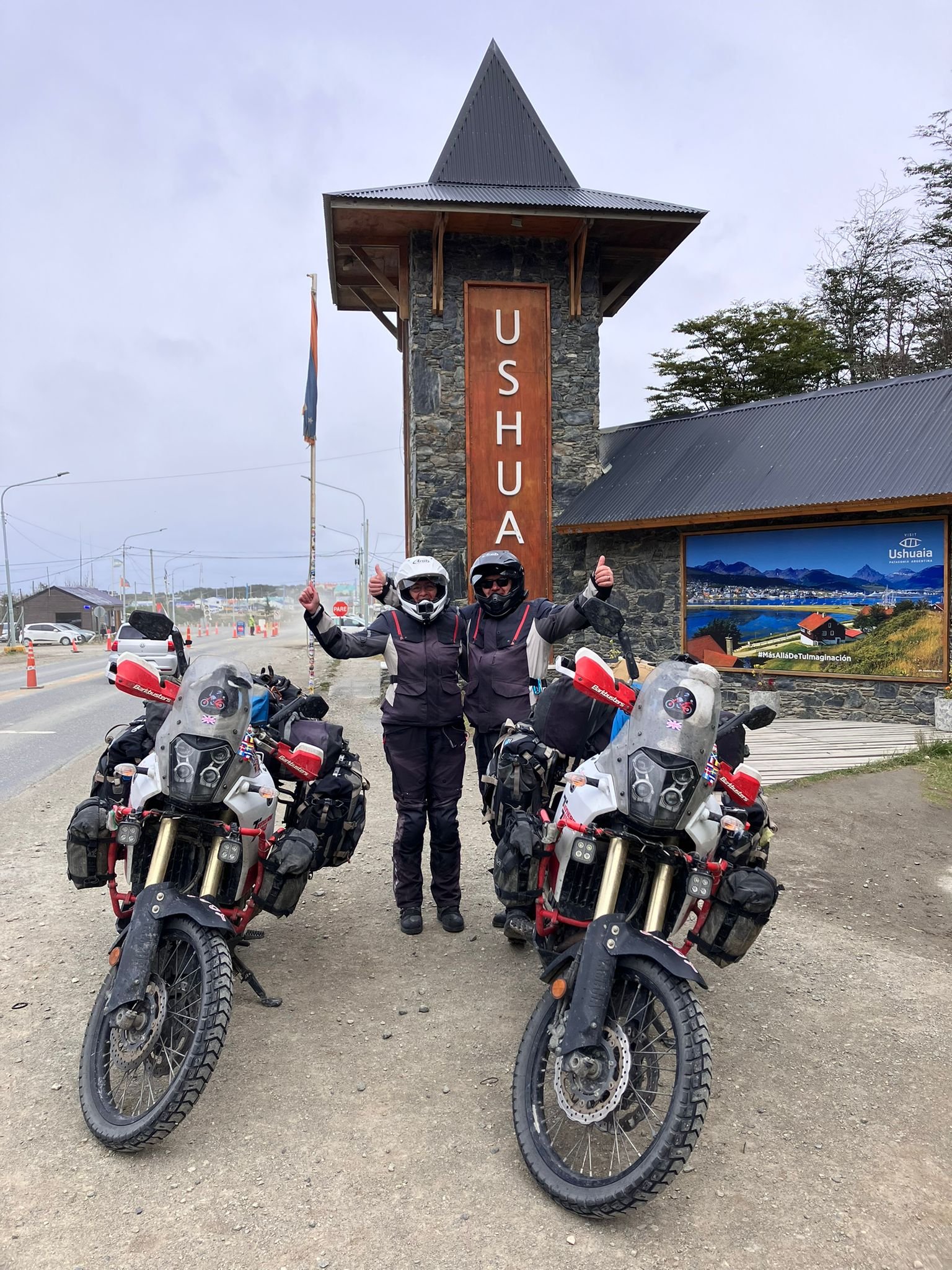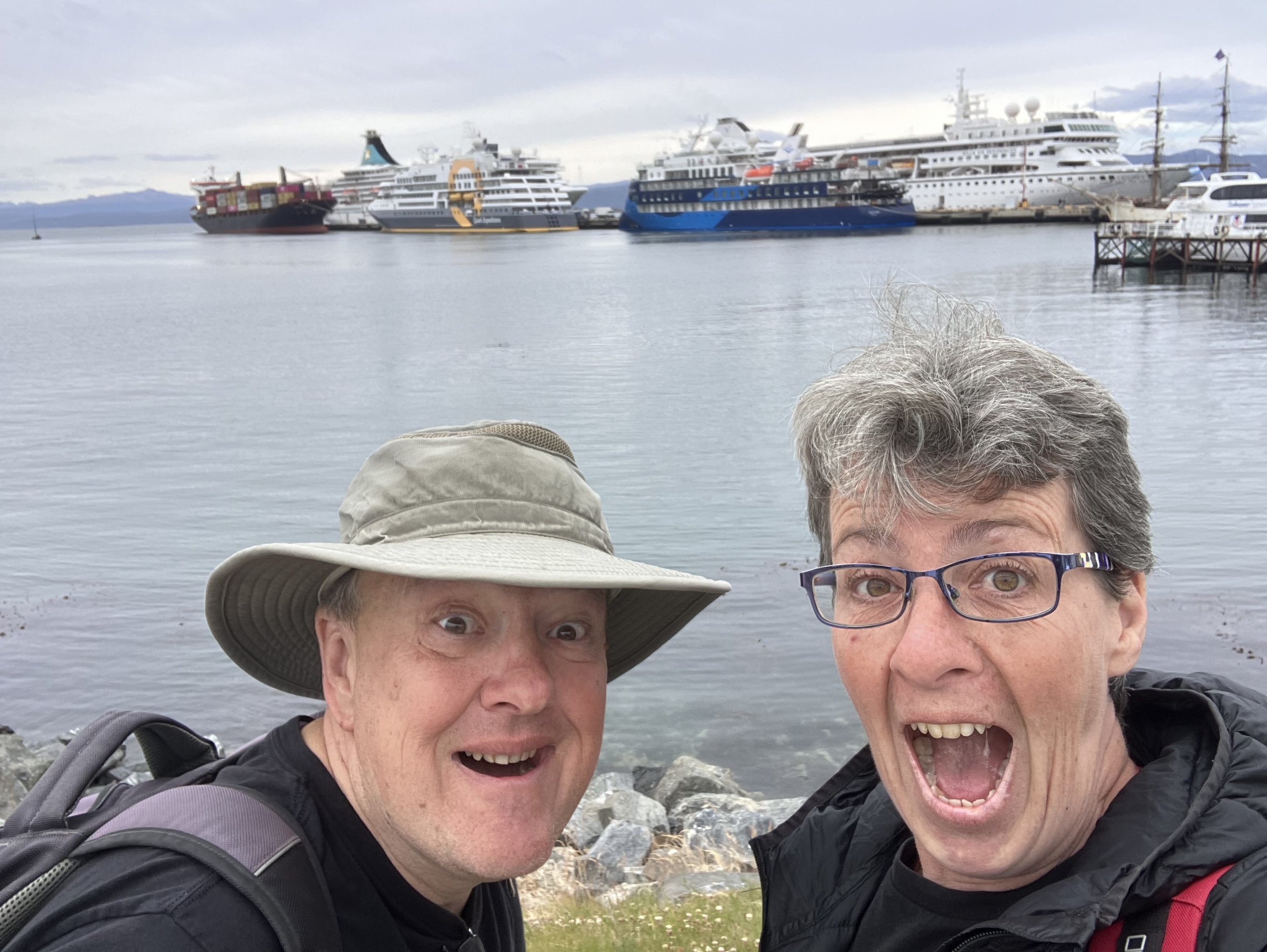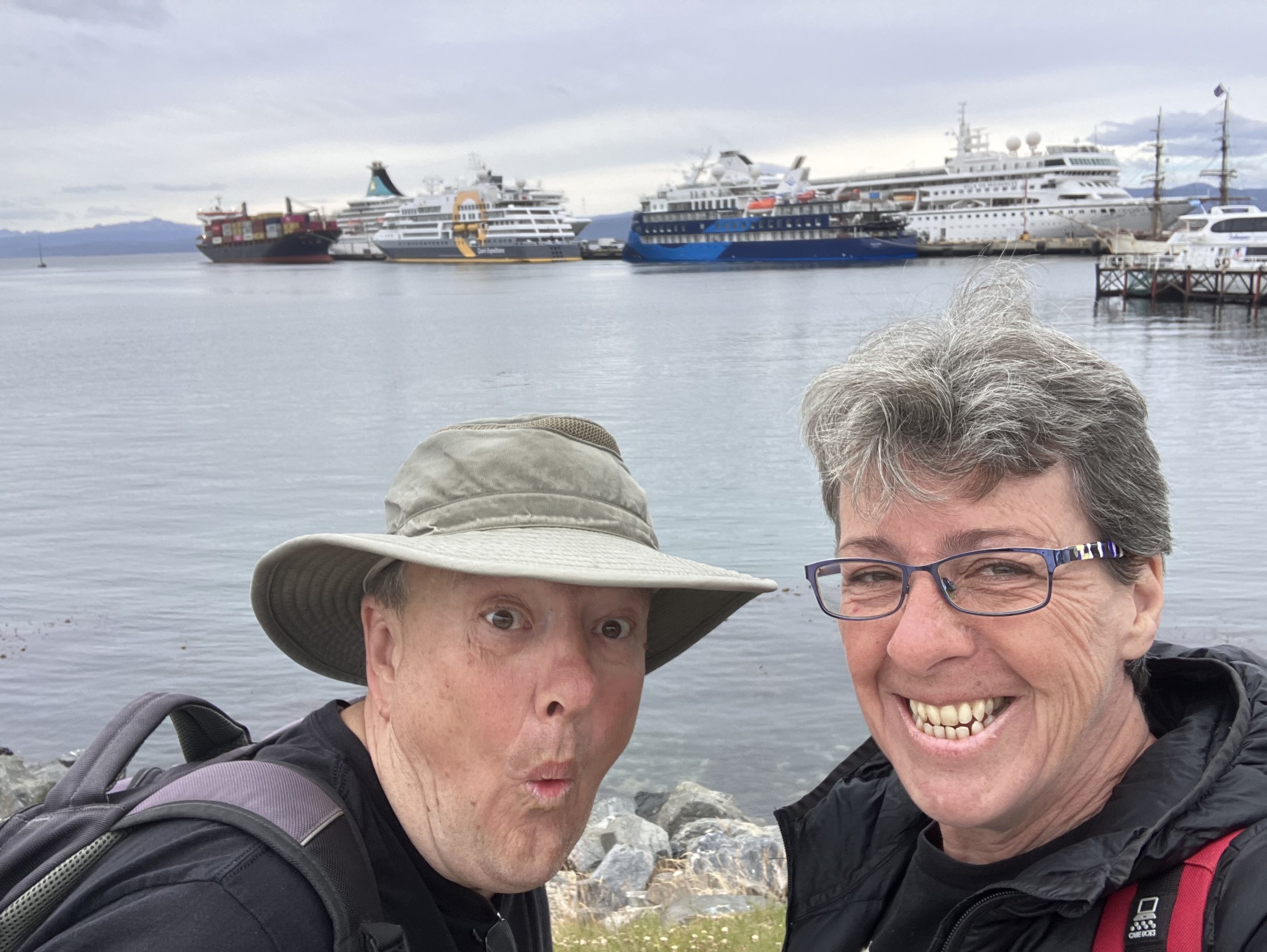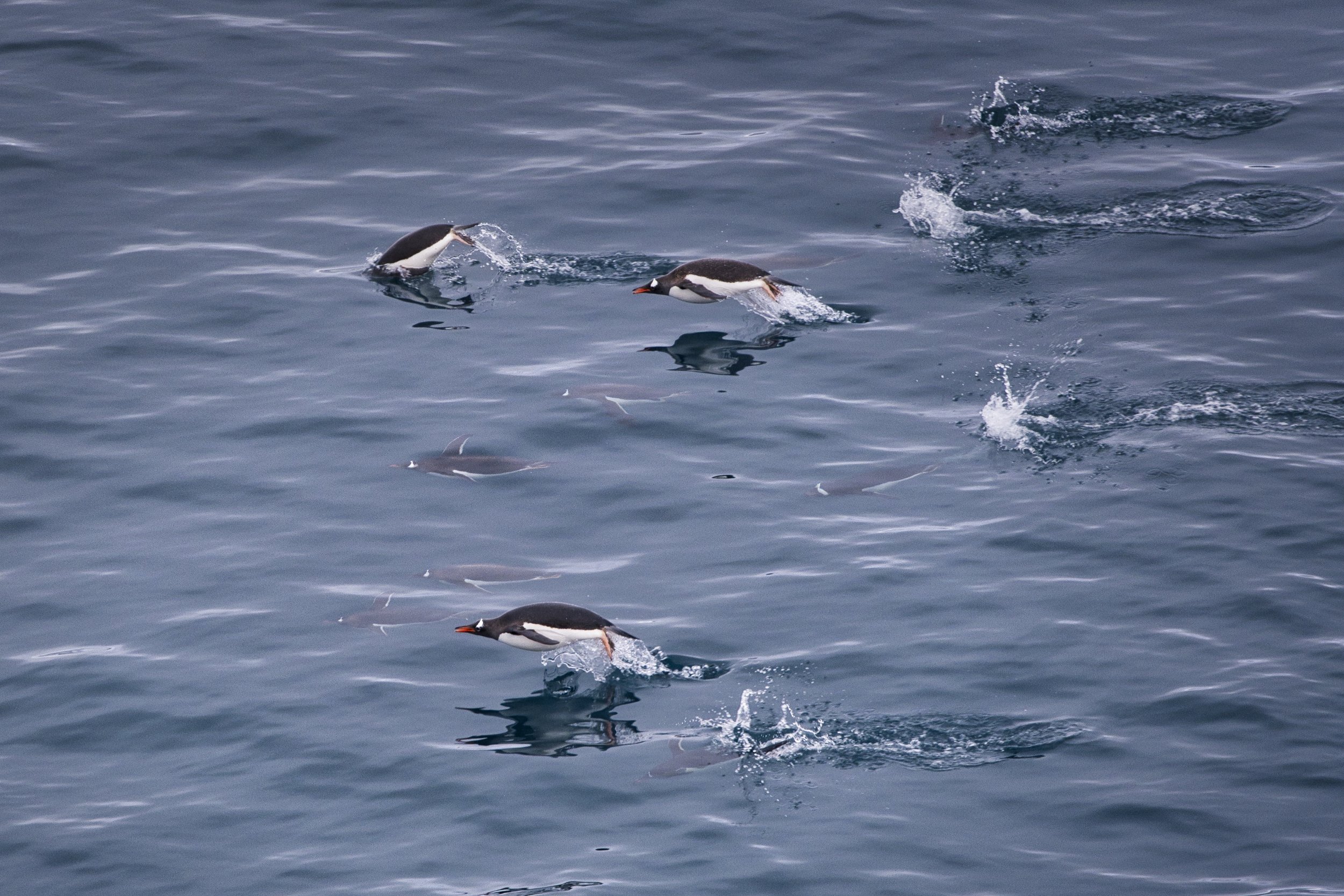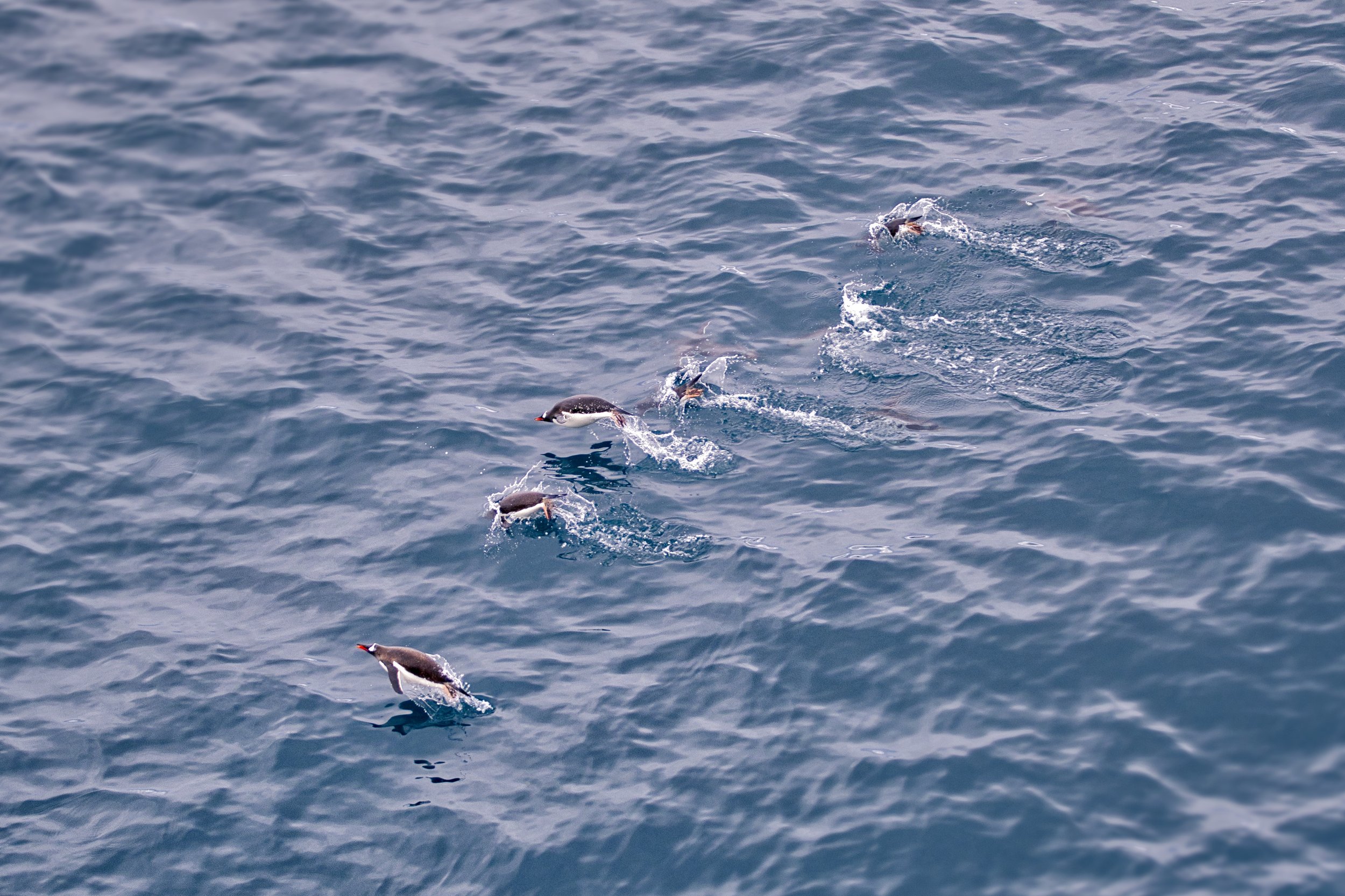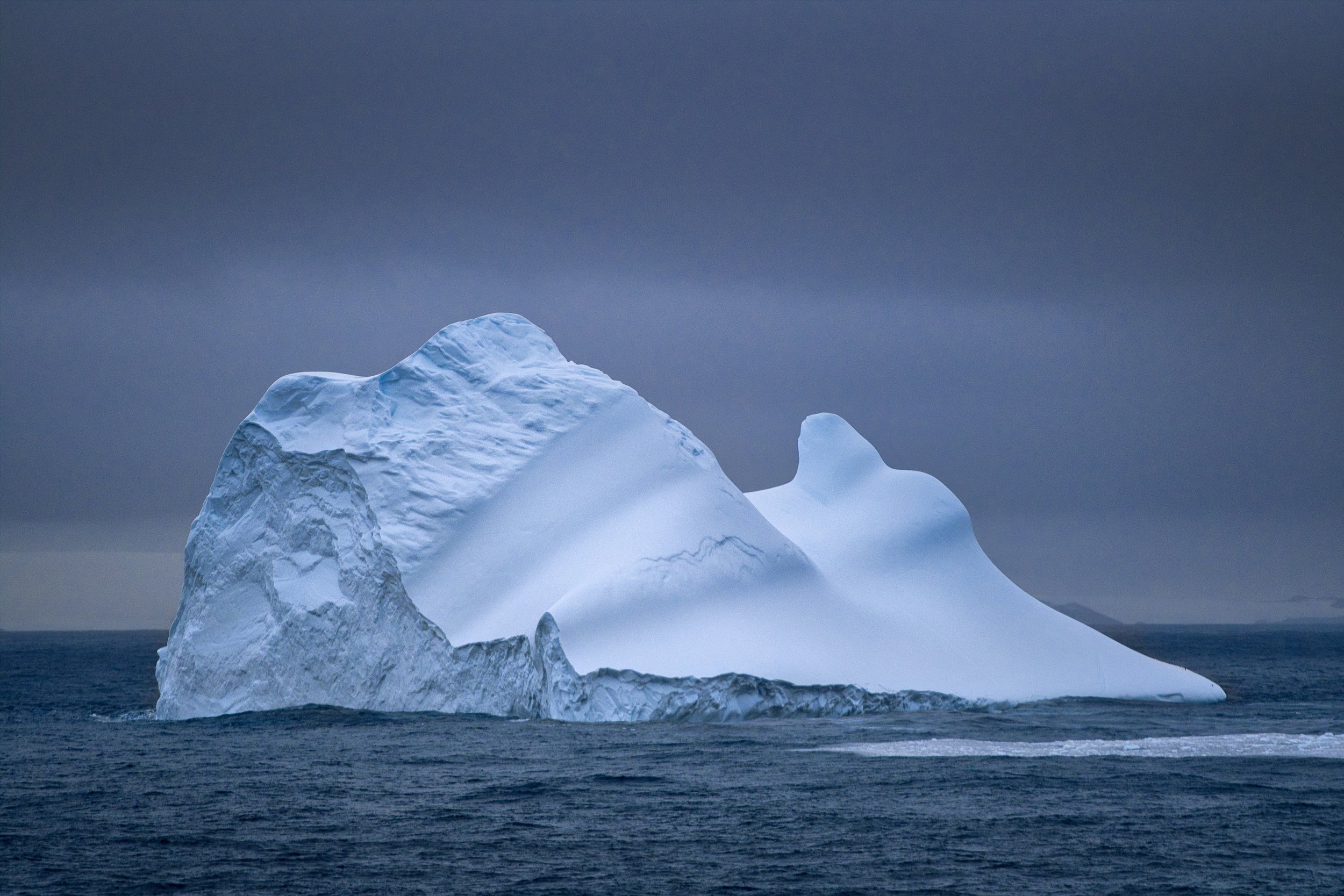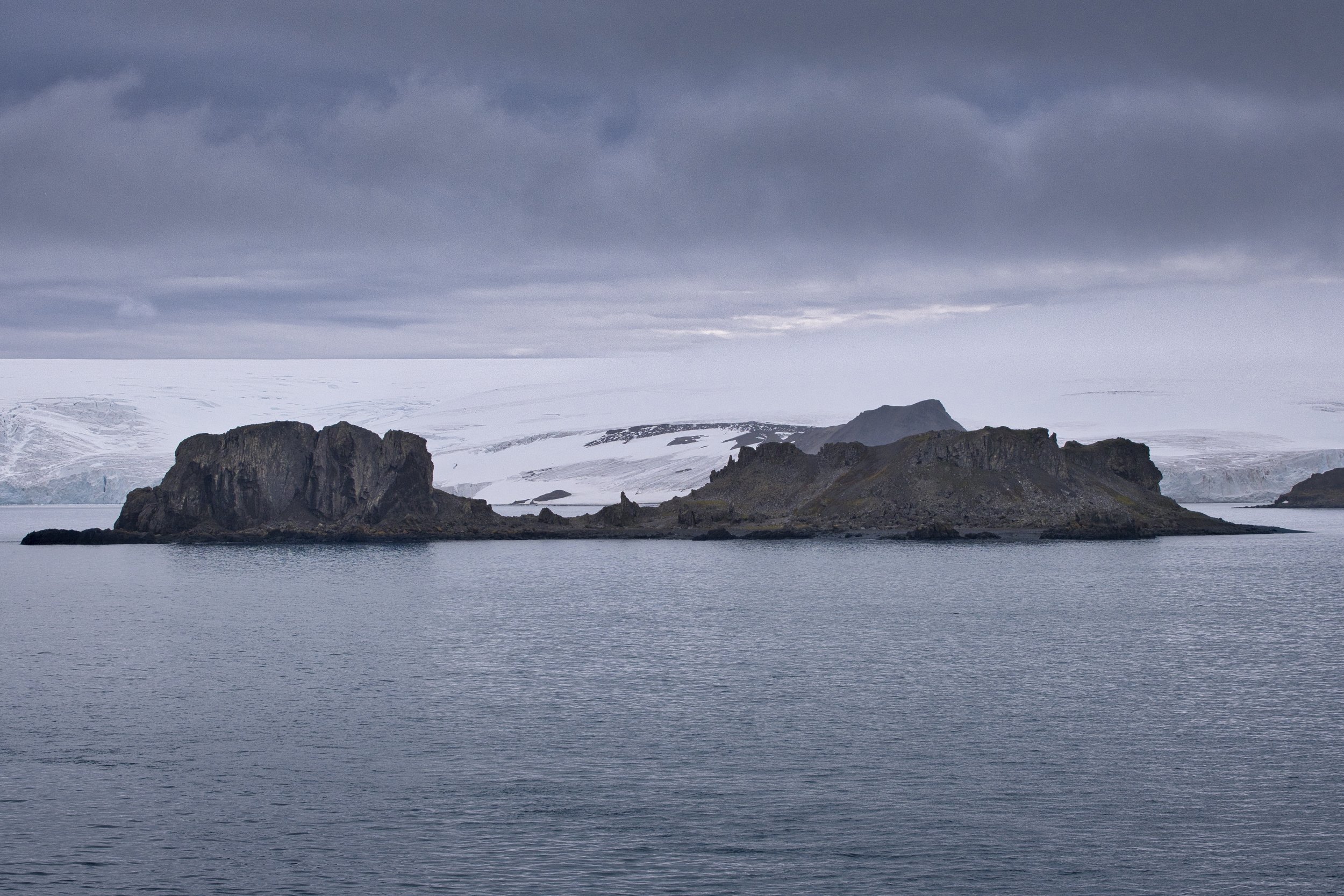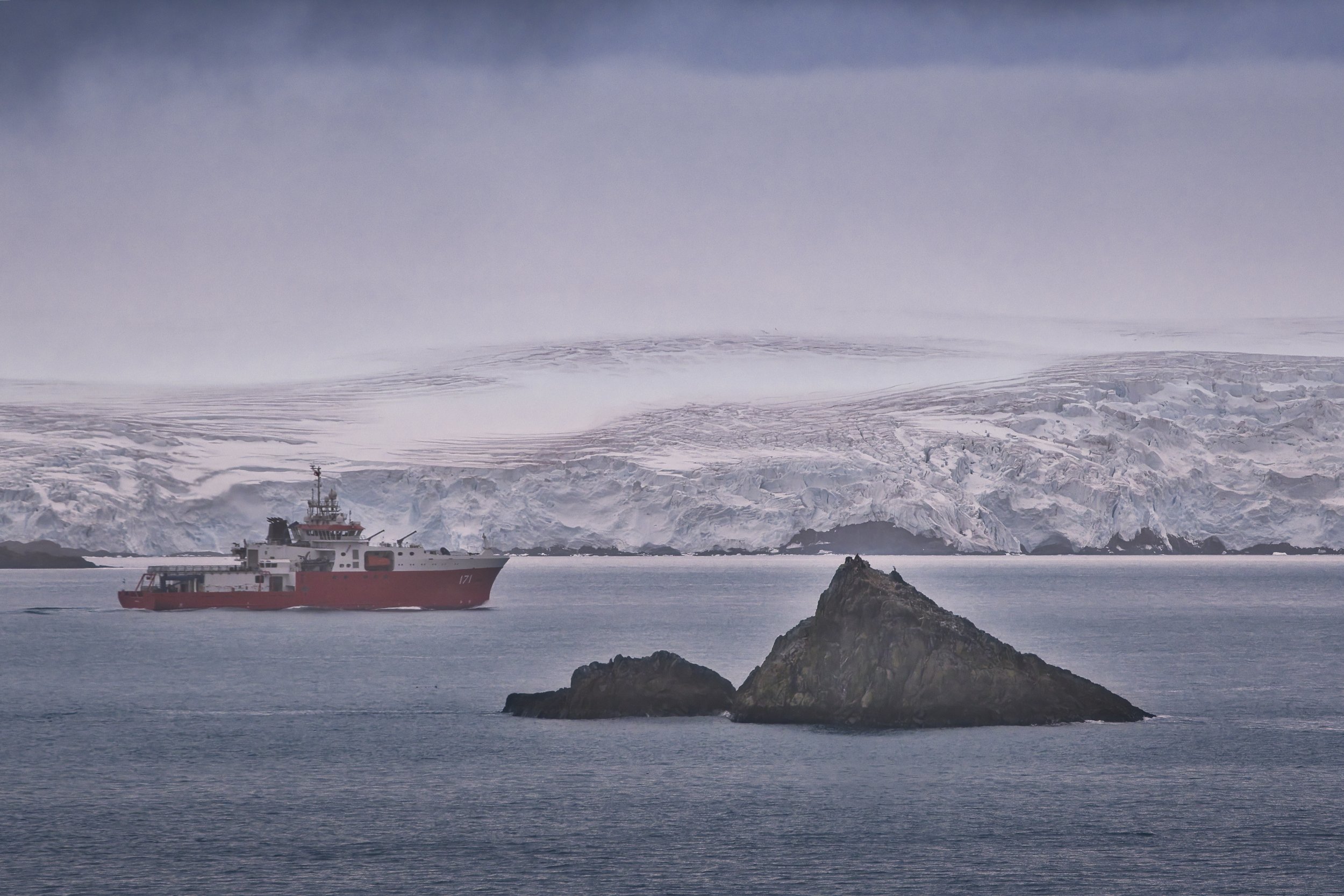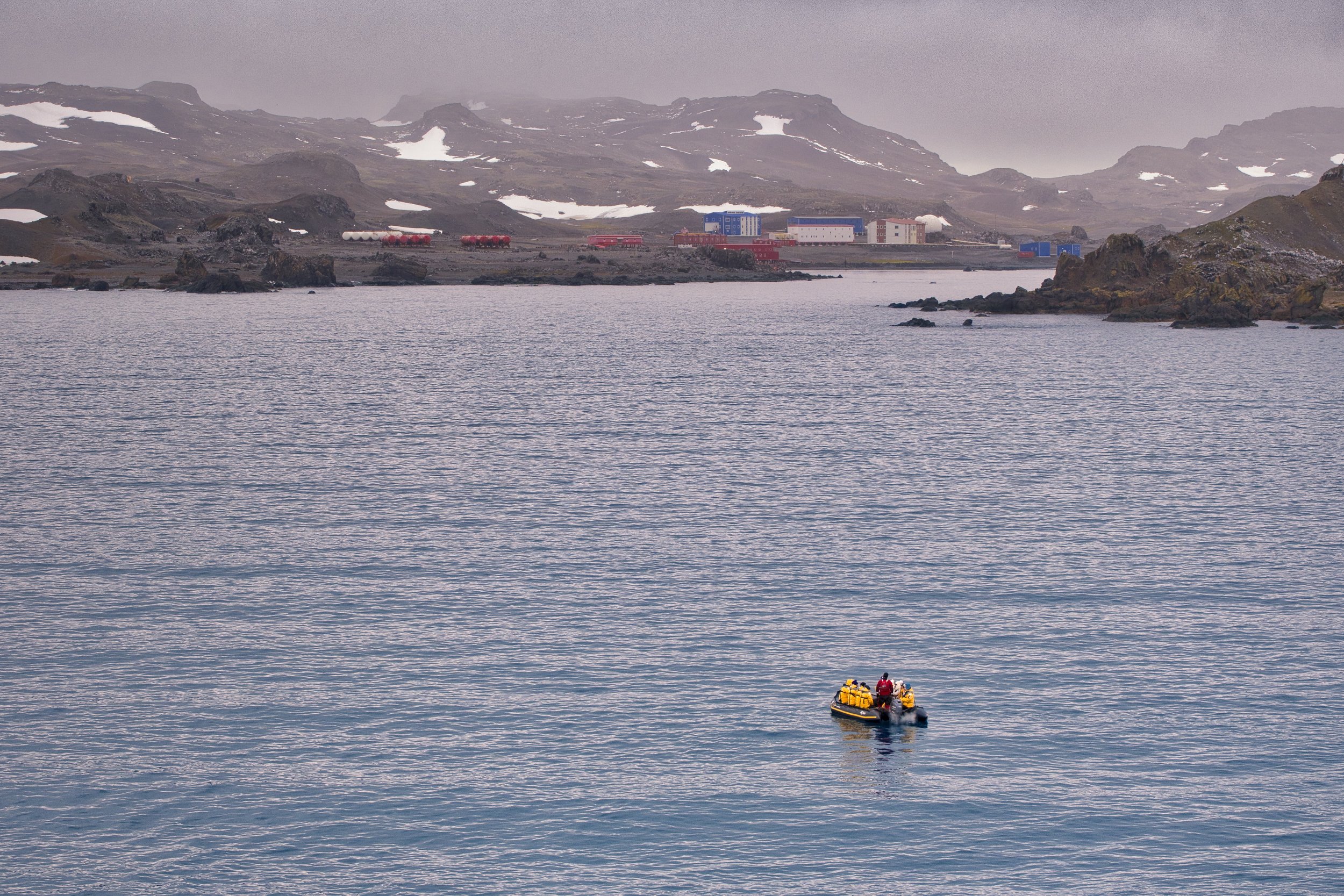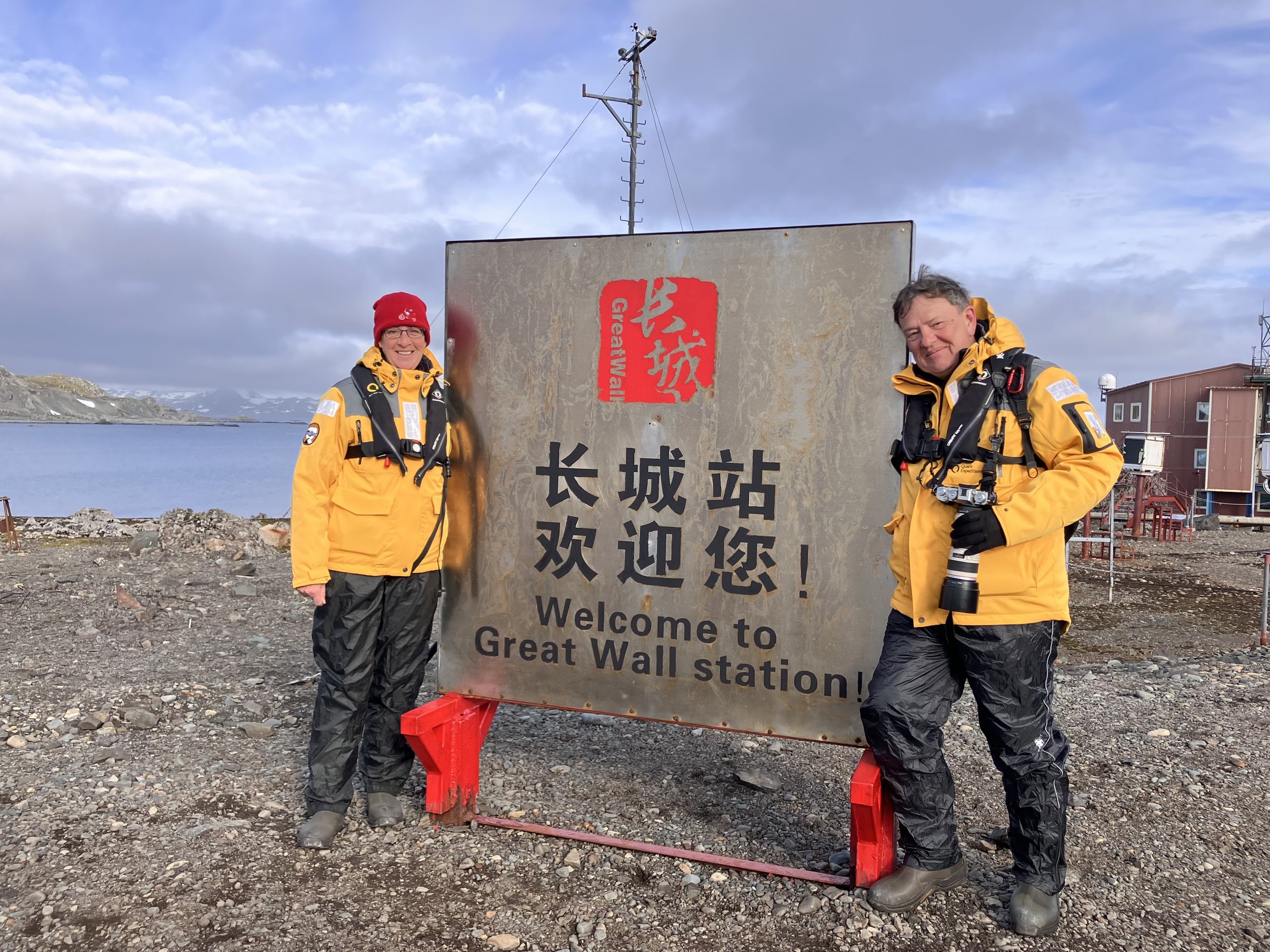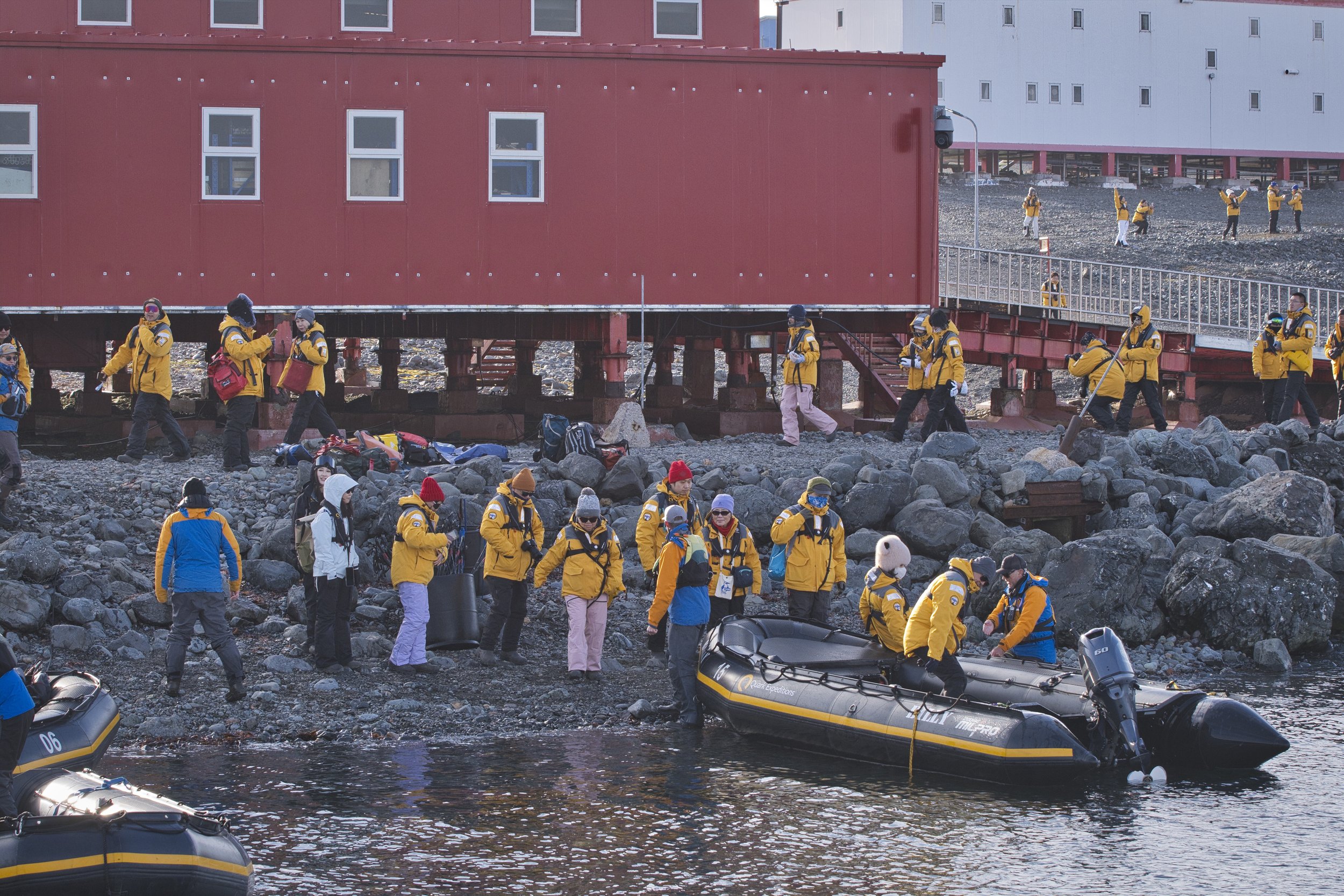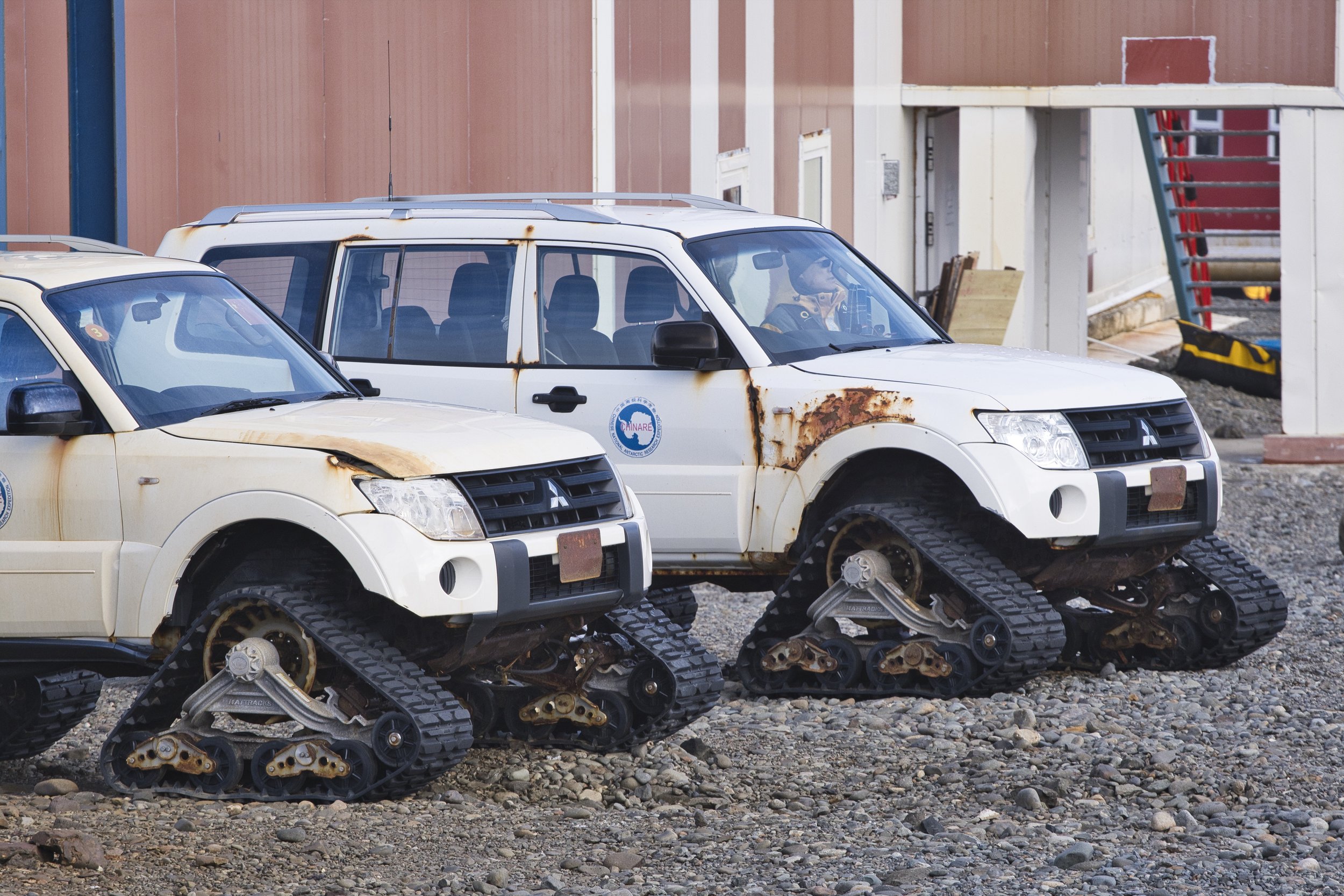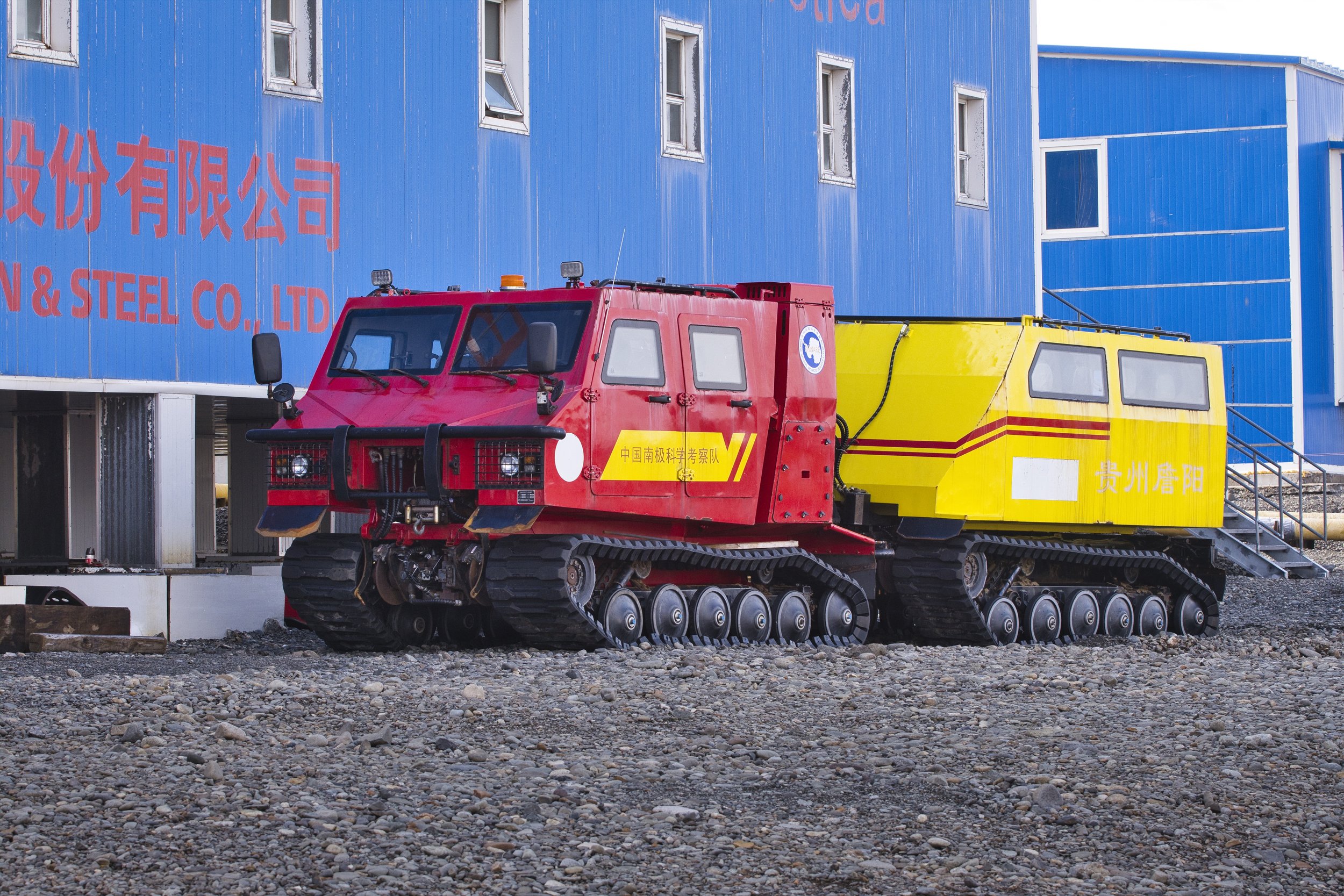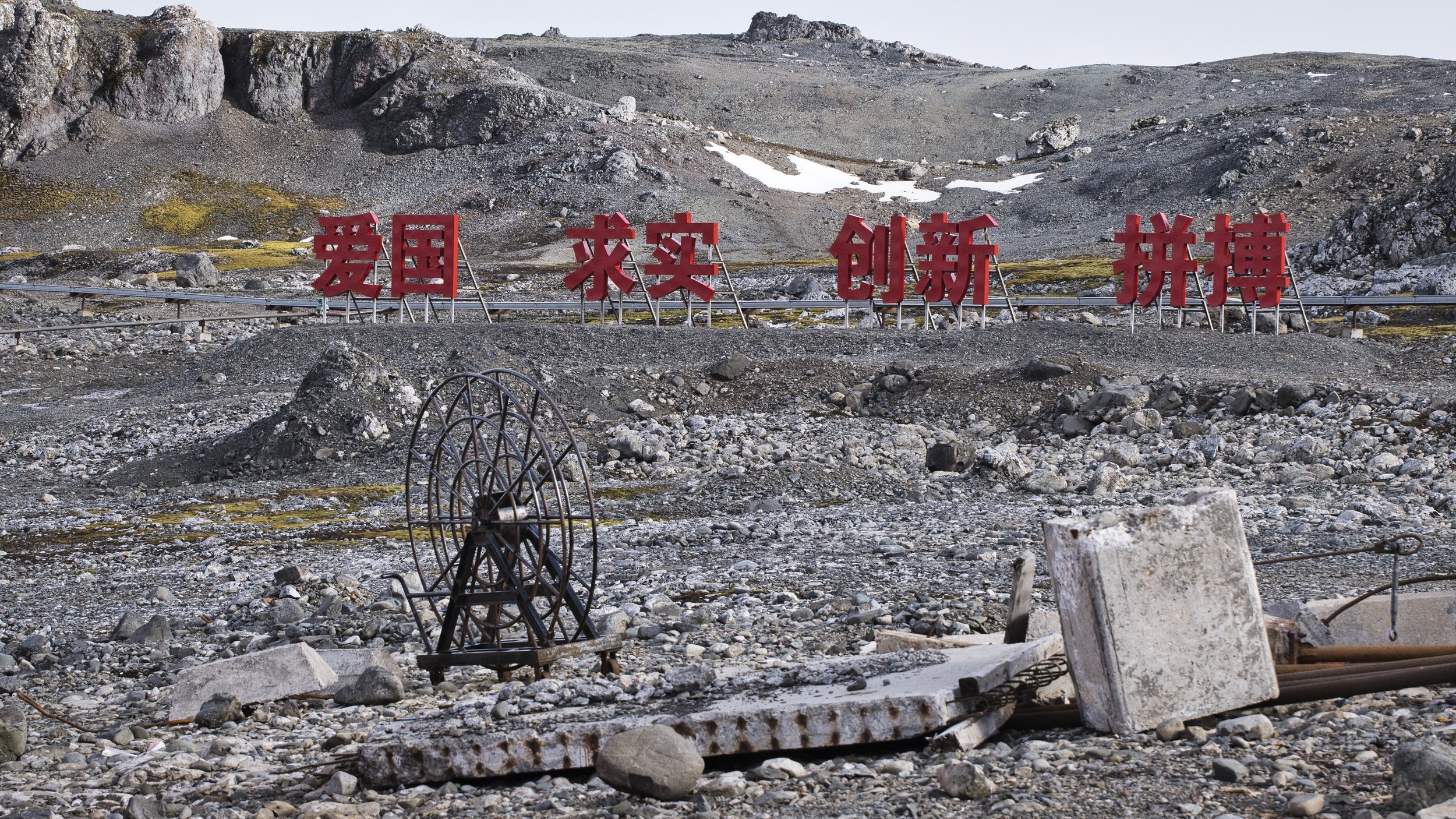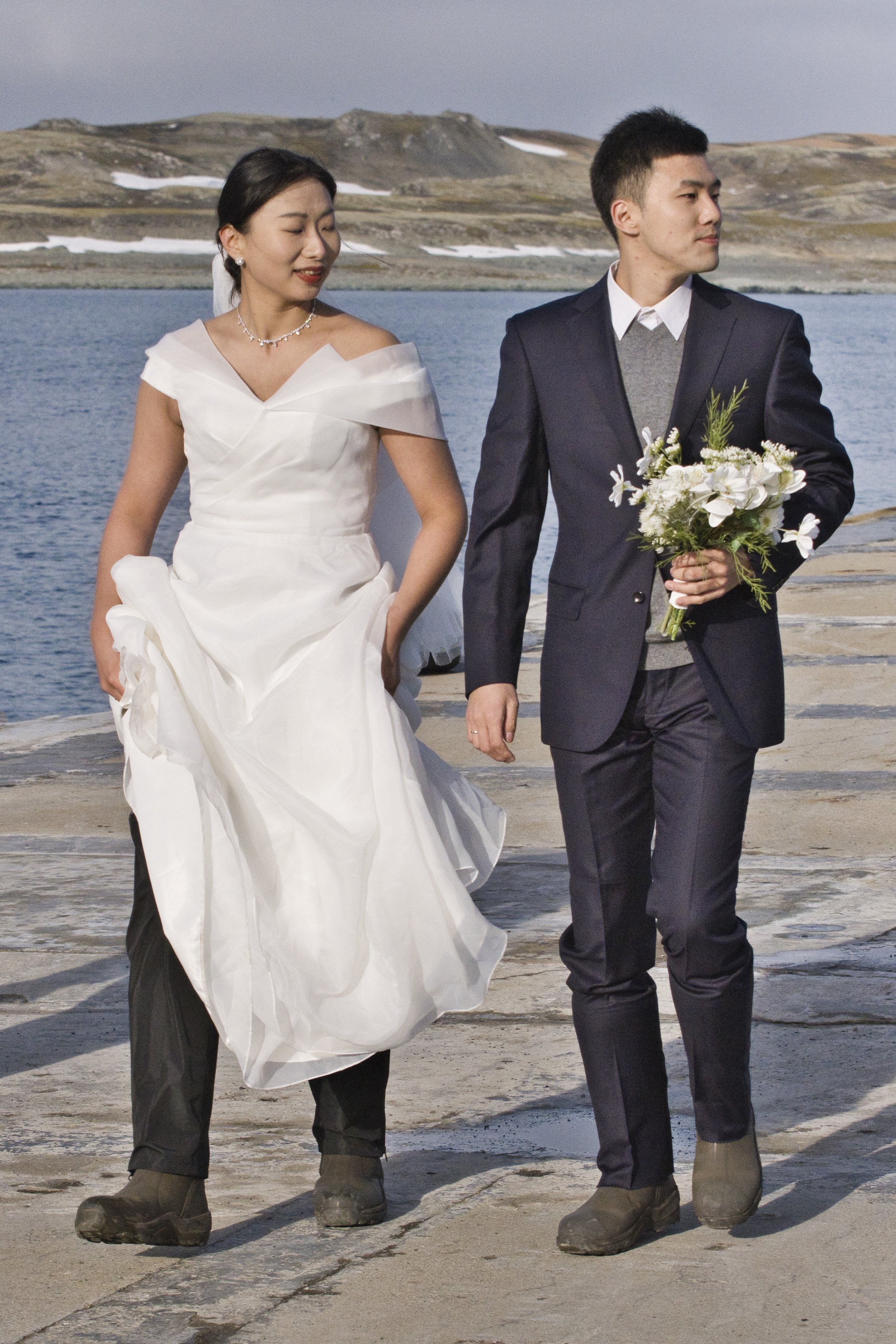Antarctica!
End to end complete.
We had reached our goal.
Eighteen months to ride our bikes from Prudhow Bay to Ushuaia - the entire length of both American continents. Just as Deadhorse is an industrial zone to the North, so Ushuaia has grown up to serve the commercial and scientific needs of Antarctica. Being the Southernmost port large enough for large ships, protected from the ravages of the Drake Passage and the convergence of the Arctic, Pacific and Southern Oceans and protected by the worst of the notorious Patagonian winds by the surrounding snow-capped mountains, it has the feeling of a frontier border town.
Vehicles of all ages and conditions reminded us of Alaska, with just the marques being a notable difference. Clouds of smelly, oily diesel fumes would emit from the old, battered rusty trucks and cars, contrasting with the much newer pick-up trucks and the very occasional EV. The roads were a mix of tarmac, concrete and potholes as they either climbed or followed the contours of the steep hills that bled in to the snow capped mountains towering over the sprawling town. The rules of the junctions were simple - you gave way to the vehicles climbing or descending, reminding us that for many months of the year, the intersections will be covered in snow. Ushuaia is growing very quickly as tourism has become a major additional attraction but its location surrounded by mountains and icy waters, give a feel of remoteness and hard-living.
Would seem a shame to stop now, when another continent was within reach.
We knew we were joining this trip unconventionally, skipping the usual connecting flight from Buenos Aires and, instead, meeting the main group at the port. What we didn’t anticipate was stepping into an entirely different world. It started in the car park, waiting for the coach to take us to the ship. As the seafront filled with Chinese travellers enthusiastically filming, posing, and live-streaming their departure, we joked about their “TikTok ways.” But as we boarded the bus, the joke quickly became reality. This was a full Chinese charter. No English announcements. No other Westerners. Just us—completely out of our depth.
Our ship awaits
Shit. What have we done? We had just spent a shed load of money on an expedition where we wouldn’t understand a word. No turning back now. We braced ourselves for a voyage of hand gestures and Google Translate something we had been doing for the last 12 months anyway. As we questioned our life choices, I said it would be a great opportunity to gain a glimpse in to yet another, new culture.
But then, something unexpected happened. The crew had our backs. First, the expedition leader, Jake, greeted us at the gangway with a knowing smile. “You two must be the Brits. Do you speak Mandarin?” he asked. When we shook our heads, his face said it all. At the top of the gangplank, the hotel manager asked the same question. Again, our sheepish “no” was met with an amused but determined response. From the brochure to the invoice, we had remarked on the abundance of Manadrin text and, in our naivety, we had assumed “Chinese charter” meant it was a Chinese owned ship company. We hadn’t thought hard enough to realise this was a trip that had been chartered by a Chinese tour operator, for Chinese attendance.
All our fears quickly vanished as the Hotel and Expedition teams pulled out all the stops. Personalised tannoy messages. Translated menus. Extra briefings just for us and translator services: It was like being accidental VIPs—not because we were special, but because we were the only ones who needed it. The translator service was provided by a Chinese lady who lived in London and who had been translator for high ranking UK and Chinese government and trade visits, including services to previous Prime Ministers Theresa May and Boris Johnson. Her skills at providing a running commentary was remarkable. All the guests had remote headsets, with the Chinese guests using channel 1 (when the Expedition crew were providing English presentations) and the Expedition teams and us, using channel 3 in reverse. An American expedition team member surprised us all, including his fellow team members, when he greeted the hall in fluent Mandarin - turns out he had lived in China for much of his childhhod.
Not the comfiest of pillows…
As we left the quayside and headed out in to the Beagle channel, life on board started with the housekeeping and safety. From ‘abandon ship’ and ‘man-overboard’ drills, to ship dress and behaviour etiquette to checking jackets and boots were the right size took up all of the afternoon. Drills and behaviours were taken very seriously as, where we were going, there was very little to help out in emergencies. We had two doctors on-board and a well equipped ‘hospital’ as anything we encountered would need to be managed by the ship and would effect us all - if one person needed hospital treatment, the ship would take a course to meet the needs of that person and the trip would be over.
Unfortunately, we missed much of the Beagle channel as the remainder of the afternoon and evening was time spent eating, drinking (Captains toast) and meeting the team. We had 2 days of the Drake Passage to get across before the action started. I was starting to journey through the history pages of superhuman endeavours, where explorers had set sail in wooden ‘bath-tubs’ to venture over the distant horizon to see what was there. We were soon to realise that most of the place names where English, as the British explorers tended to be the first to conquer this inhospitable place.
The Drake Passage is named after the British explorer, Sir Francis Drake and has a notorious reputation for rough and unpredictable seas. It is the shortest point between South America and Antarctica and where the Pacific, Atlantic and Southern Oceans meet. Tides, winds and rotation of the earth combine to throw up immense swells up to 12metres in height. If you look at a map showing marine and land topography, you will see how the South American and Antarctica landmasses create a funnelling chokepoint. It is accepted to be one of the most challenging stretches of water that any ship can attempt to cross. The Drake has two names - the Drake Lake or the Drake Shake…
At times, rafts of penguins would join us on our passage.
We started seeing lots of these…
We all had fancy jackets.
Hard to convey scale.
During one of the evenings presentations, it was recommended we take sea-sickness pills as a precaution. The crossing was not expected to be too rough with swells around 4 metres and the Ultramarine, being a new ship, was fitted with effective stabilisers, so we weren’t expecting too much problem but, as a precaution, we took the advice and helped ourselves to a dose of pills. These are designed for hay-fever allergies but work in a similar way of inhibiting some brain receptors etc., However, we weren’t prepared for just how drowsy they would make us. We both awoke after a great nights sleep (the bed was awesome) but lived the day in a field of fog until we both decided we would try without and allow the fog to clear. We were in the Drake Lake anyway…
As the Expedition Team members became known to us either through presentations or one-on-one chats, we came to realise just what experts we have on board. From birds, to mammals, to rocks, to Antarctic expeditions, to pilots - we had experts of all sorts and, being two of very few who had English as their first language, we found ourselves in deep conversations with many of the team. Some of the team were permanent, paid positions, others were voluntary but with specific skills required for the trip.
Our expedition leader, Jake, was a Quark company man who had worked through the various logistics and management routes. He was like a duck on water - totally calm on the top but with his feet thrashing at a gazillion miles per hour. Not the greatest personal skills and he seemed uncomfortable in more social environments but his ability to make plans, change plans and change again, proved pivotal to his role. As with everything in Antarctica, all is weather dependant. Between Jake and Yuri (Captain), they would attempt two landings and two Zodiac cruises per day. Sounds simple enough, but there are rules to abide by.
The Antarctic Treaty is a complex agreement reached by many countries that have an interest and presence in Antarctica. It’s primary aim is to preserve the unique habitats and restrict the exploitation of the Antarctic region. Working within the Antarctic Treaty is The International Association of Antarctica Tour Operators (IAATO) that primarily regulates tourism in Antarctica. The IAATO is a code of conduct that promotes safe and environmentally responsible travel. The code is voluntary that all tourism charter companies abide by, but this does not include private voyages and, over the years, the code has been tightened to reduce the inevitable impact humans have in this region. Not for the first time on our trip, we had mixed views of privilege to be there but aware that our presence must have an impact. I also believe that if Antarctica is to be preserved, greater rules will be imposed that may lead to reduced tourist numbers. Smaller guest numbers will result in smaller ships and higher prices.
Jake and Yuri had to work within the rules of the IAATO to provide us with our trip. The IAATO provide a list of landing sites that are deemed safe and low impact for wildlife, whilst providing access to the wildlife we had come to see. Only one ship was allowed access to any one site at any one time. These are booked out by the various tour operators and bartering between ships is a regular occurrence. Maybe one ship was too far out to make their booking, so a trade will be made with a closer ship. Weather may be poor for the expected landing, so another site is looked for. Juggling weather and access was just one of the many things Jake and Yuri would be constantly reviewing. To the general guest, this would all be unseen as the duck continues to glide across the pond surface. All this juggling meant daily itineraries were hard to forecast and could be subject to change at short notice.
Our first sighting of land after the Drake - The South Shetland Isles.
Research vessel just off the Shetland Isles
The Chinese Great Wall Research station
On the second day of the Drake and as the South Shetland Isles came in to view, we were told of our first landing planned for the afternoon. Not one of the normal landings but a very special treat for this particular voyage. One of the Chinese guests and experts was a man who had helped build the Chinese Dome Argus (or Dome A as it is more commonly known) Antarctic Station on the mainland. It was built on the highest point of the Antarctic continent at just over 4000 metres and is approximately 1200km inland. It is reported to be the coldest place on the planet with temperatures regularly falling to below -90C. Beneath the station in around 2400 metres of ice and then a mountain range around the size of the European Alps.
With his contacts and influence, the Chinese Government had given permission for the ship to visit the first Chinese Great Wall research station on King George Island, built in 1985. And so we grabbed our first chance to be ashore in Antarctica, albeit on the islands and not yet the mainland. To the Chinese guests, this was an immense privilege and that feeling was contagious. Albeit, it was more akin to an industrial site and our first glimpse in to the way Chinese people photograph everything and, preferably, with them in it.
As we strolled between the accommodation and research building blocks, reminiscent of the accommodation blocks in Alaska, a middle aged Chinese lady asked me if I would take her picture with the building behind. I obliged, handing the phone back for the lady to check the photos, to which she promptly deleted them all and instructed me on what I should or should not include. So I took more photos and handed the phone back. A couple were keepers and I let loose a sigh of relief. As I was about to walk away, she started issuing further instruction as she wanted to try some different poses - being in the shot is just not enough, these days. I politely declined, pointing toward my own camera and indicating that I wished to take my own photos. She was not overly happy and, I believe, she thought I was a member of staff and not one of the paying guests.
Can we now add China to our list of countries?
Chinese Wall Taxi rank
Lick of paint?
The bus service
If anyone can tell me what this says please?
The happy couple.
Within the guests were a couple of newly weds. Throughout the whole of the trip, this was the only time we saw them in their wedding dress and suit, as they posed next to a couple of statues and memorials that were dedicated to the achievement of the Chinese on this site.
I don’t know the significance but significant it is.
Obligatory footwear

